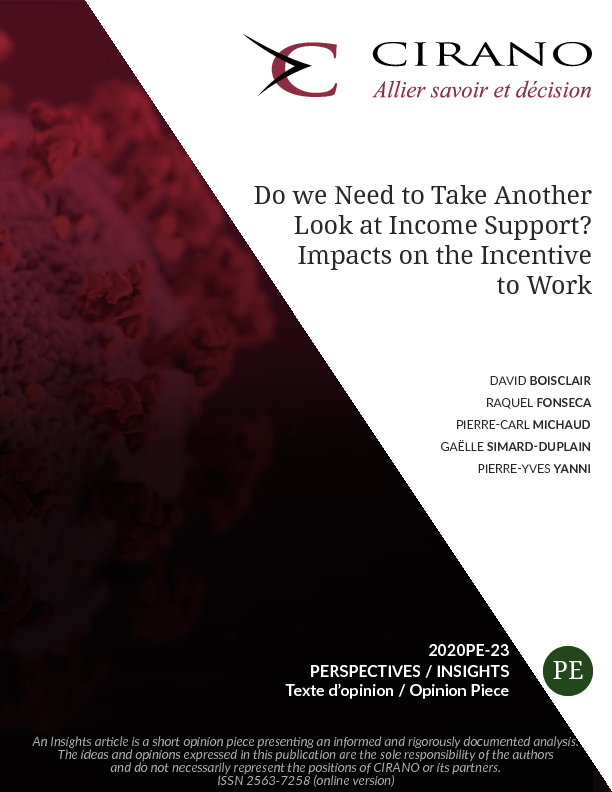Do we Need to Take Another Look at Income Support? Impacts on the Incentive to Work
Any effort to provide income support must come to terms with an impossible trinity: It cannot simultaneously be generous to those with the greatest need (without employment income), be affordable for public finances, and incentivize work. It is impossible to achieve all these goals at once, so a difficult balancing act is required. For example, a study by Godbout and St-Cerny reveals that the measures undertaken in response to the pandemic have had the impact of increasing theeffective income floor in Quebec for low earners. They point out potentially detrimental impacts on the incentive to work. In recent years the idea of a guaranteed minimum income has received considerable attention, and the response to the pandemic has, in effect, amounted to something like a guaranteed minimum income, especially the Canada Emergency Response Benefit (CERB) and its student edition, the Canada Emergency Student Benefit (CESB). For example, CERB benefits for those without employment income are quite generous, but since they are only available to workers earning less that $1000 / month they may create a disincentiv to resuming work or to increasing the number of hours worked to a level that would raise earnings above $1000 per month. On top of these benefits there are enhancements to the GST Credit and the Canada Child Benefit, as well as measures like Quebec’s Incentive Program to Retain Essential Workers (IPREW). While several indices suggest that these supplements to the social safety net could create a disincentive to work, our team wanted to conduct an analysis that integrated these programs into the income taxes paid by Quebeckers (both provincial and federal), so as to compute measures of incentivization having broad recognition among economists, the effective marginal tax rate (EMTR) and its little brother, the participation tax rate (PTR). Also, it is worth looking at the ramifications of these new programs for the cost of existing programs. In this note we present an illustrative case study to tide us over pending more detailed analyses currently underway.




